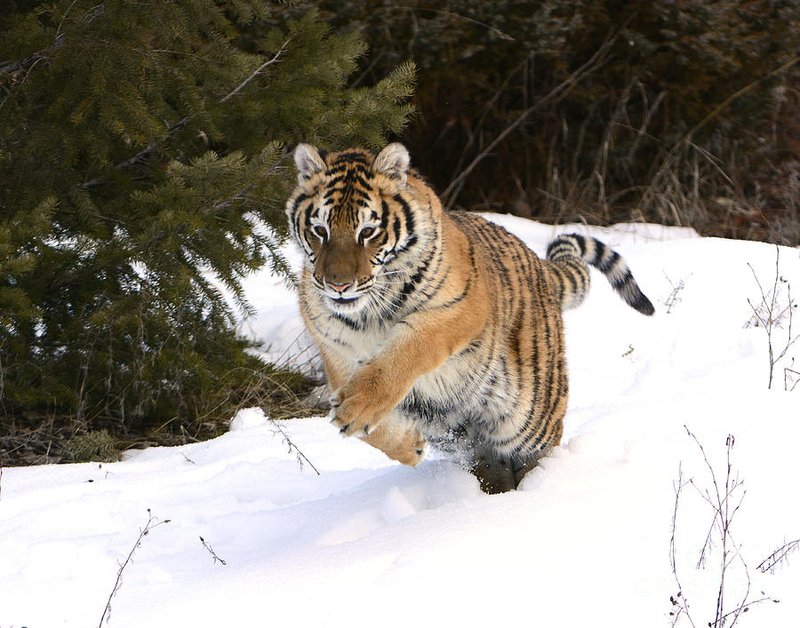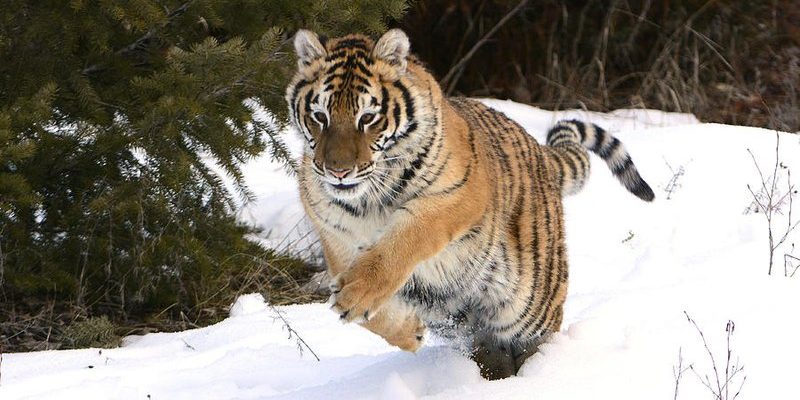
You might be wondering, what makes these tigers so unique in their hunting style? Well, it’s a combination of their physical prowess, keen instincts, and deep understanding of their environment. In this article, we’ll dig into the fascinating world of the Siberian tiger’s diet and the clever strategies it employs to hunt effectively. By the end, you’ll have a much clearer picture of what it takes for these incredible animals to survive in their secluded habitat.
Understanding the Siberian Tiger’s Diet
The Siberian tiger is a carnivorous predator, which means their diet primarily consists of meat. But it’s not just any meat—they have specific preferences that reflect their environment and hunting skills. Siberian tigers typically hunt large ungulates, which are hooved animals such as deer and wild boar. In fact, one of their favorite meals is the sika deer, which provides a substantial amount of energy to power their formidable hunting abilities.
Here’s the thing: Siberian tigers are opportunistic eaters. While they prefer larger prey, they won’t hesitate to target smaller animals if the situation calls for it. This versatility helps them adapt to their changing environment. During times when larger prey is scarce, they might hunt smaller creatures like hares or even birds. By being flexible in their diet, these tigers ensure they won’t go hungry, regardless of the season.
Another interesting aspect of their diet is how they consume their meals. After a successful hunt, a Siberian tiger can eat a whopping 70 pounds of meat in one sitting! However, they won’t feast every day. Often, they’ll leave leftovers to revisit later. This behavior allows them to make the most of their kills, ensuring they have food available even in leaner times.
The Role of Instinct in Hunting
When it comes to hunting, instinct plays a crucial role in the Siberian tiger’s success. These big cats are born with natural hunting skills that are honed through practice. From a young age, cubs learn essential skills like stalking and ambushing. This training is vital for their independent survival once they leave their mother’s side.
The cold, dense forests of Siberia are the perfect backdrop for a tiger’s hunting tactics. These tigers use their stunning camouflage to blend in seamlessly with their surroundings. Imagine walking through a snow-covered forest and suddenly spotting a striking orange and black-striped tiger crouching low, waiting for its moment to pounce. This ability to remain hidden while stalking prey is a critical advantage.
Once they spot their target, Siberian tigers often use a combination of speed and strength. They can sprint for short distances to chase down their prey, but most of the time, they rely on stealth. A key part of their strategy is to get as close as possible before launching an attack. This careful approach helps increase their chances of success.
Hunting Techniques: Stalking and Ambushing
Let’s dive deeper into the specific hunting techniques that Siberian tigers use. The primary methods are stalking and ambushing. Stalking involves moving silently and cautiously through the underbrush, carefully observing for any signs of potential prey. The tiger might inch forward, staying low, and using available cover to avoid detection.
Once the tiger feels it has closed the distance, it will often shift from stalking to an ambush strategy. This is where patience pays off. By waiting for the perfect moment, the tiger can launch a surprise attack when the prey is least expecting it. This technique is reminiscent of a well-planned military operation—timing, positioning, and the element of surprise are all crucial.
In some cases, tigers will also use their surroundings to their advantage. For instance, they might choose to hunt near water sources where prey frequently visits to drink. This strategic thinking not only increases catch rates but also conserves energy, a valuable commodity in the wild.
Seasonal Variations in Hunting Behavior
Did you know that the Siberian tiger’s hunting behavior can change with the seasons? During winter, when prey might be more scarce, these tigers are known to adjust their hunting techniques. With snow covering the ground, tracks become more visible, helping them locate potential meals more efficiently.
In addition to adaptations in hunting strategy, Siberian tigers might also change their diet depending on seasonal availability. In spring and summer, when food sources are plenty, they might hunt larger animals that provide more energy. As winter sets in and food becomes limited, they may revert to smaller, more abundant prey. This adaptability is a key part of their survival strategy.
During particularly harsh winters, Siberian tigers might even expand their territories in search of food. A larger range allows them to access different habitats and prey types, ensuring they find enough to eat. This flexibility showcases their resilience and ability to thrive in challenging conditions.
The Importance of Territory in Hunting
Territory is another vital aspect of the Siberian tiger’s life that directly influences its hunting success. Each tiger establishes a defined territory, which it marks with scent to signal to others that it’s claimed. This area can span up to 1,000 square miles, depending on the availability of prey and other environmental factors.
Having a well-defined territory benefits the tiger in multiple ways. First, it reduces competition for food, ensuring that a tiger has sufficient resources to hunt. Second, it allows them to monitor and control their environment, keeping track of the movement and population of prey species. Essentially, the larger the territory, the more options a tiger has for hunting.
Additionally, territorial disputes can arise between tigers. These conflicts can lead to intense fights over resources, but they also serve to maintain healthy populations. When prey is abundant in one area, it helps the entire tiger population by providing enough food for all. This interconnectedness demonstrates the delicate balance within the ecosystem.
Conservation Efforts and the Future of Siberian Tigers
Despite the impressive adaptations and strategies of the Siberian tiger, these magnificent big cats face significant threats. Habitat loss, poaching, and prey depletion have led to a steep decline in their numbers. Conservation efforts are critical to ensuring their survival in the wild.
Many organizations are working tirelessly to protect Siberian tiger habitats and combat poaching. Efforts include creating protected areas, enforcing stricter laws against illegal hunting, and promoting sustainable practices within the surrounding communities. Education also plays a crucial role; raising awareness about the importance of these tigers can help garner support for conservation initiatives.
You might be wondering what you can do to help. Supporting wildlife conservation organizations or spreading awareness about the challenges faced by Siberian tigers are great steps. Every little bit counts in the fight to protect these incredible animals and their environment.
Final Thoughts on the Siberian Tiger’s Diet and Hunting Strategies
Understanding the diet and hunting strategies of the Siberian tiger provides a glimpse into the fascinating world of one of nature’s most powerful predators. From their impressive diet of large ungulates to their clever hunting techniques, these tigers have evolved to thrive in their harsh habitats. As we learn more about these majestic creatures, it becomes clear that protecting them is essential not just for their survival, but for maintaining the health of our ecosystems.
By appreciating the unique ways Siberian tigers adapt and survive, we can all play a part in ensuring their future. Whether it’s through supporting conservation efforts or simply sharing knowledge, every action helps to protect these incredible big cats and their disappearing habitats. Let’s work together to ensure that future generations can marvel at the Siberian tiger roaming the forests of Siberia, just as they do today.

